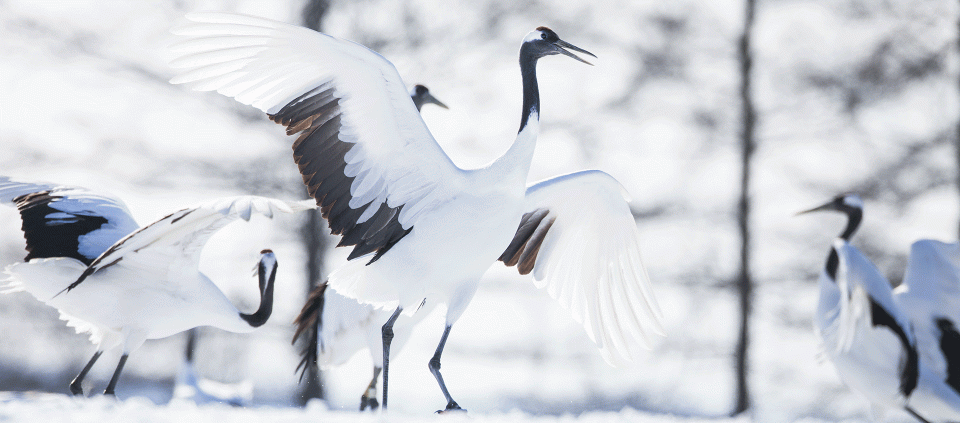Taking Flight with Soft White Crane Qigong

Cranes have long been associated with royalty, beauty, and grace. They can often be found standing on one leg in shallow water, their movements soft, flowing, and delicate. These beautiful white birds are known as protectors of family. It is said that they provide great inspiration, teaching us the wisdom of being reserved, quiet, and keeping our own counsel.
According to legend, a great martial arts master of the Crane style named Fang Zhang-Guang taught his daughter the basics of his art. One day she went down to the river to collect water and observed the habits of the white cranes. She noticed their grace and strength and began to practice mimicking their movement. This became the foundation for the White Crane style, as well as soft White Crane movements that have become legendary in China for their ability to produce robust health, balance, longevity, and strength.
Shaolin Soft White Crane Qigong is an extremely graceful and beautiful system of exercise that mirrors the flowing movements of a white crane in flight. The Soft White Crane system involves warm-up exercises, specific to this style of qigong, as well as a number of “pre-flight” practices. The movements include 12 basic “flying” patterns and four leg positions. Each of the 12 flying patterns has an additional single wing pattern that usually involves a twisting action. There are four extra patterns that blend several of the wing movements together.
Each of these flying patterns can be done in one of four different leg stances or movements: Horse Stance, Rocking, Stepping, and Circle Walking. That adds up to 96 separate wing patterns, each working a different part of the body and energy system. Fundamental to all these patterns is the body movement called the Soft Whip. Although all these movements may sound daunting to the beginning practitioner, the heart and most important parts of the Soft White Crane style are the Soft Whip and the 12 simple wing patterns. Everything else is an elaboration on these.
In addition, the practitioner has the option of two breathing patterns, normal abdominal breathing or reverse abdominal breathing, while performing these movements.
By focusing on the spine and torso, the Crane movements develop and maintain a strong, supple upper body and flexible spine. Just as the crane comes down to rest upon the earth, the exercises also develop a sense of groundedness, helping the practitioner to feel rooted and centered.
Find out about upcoming programs with John C. Platt exploring Soft White Crane Qigong.
© Kripalu Center for Yoga & Health. All rights reserved. To request permission to reprint, please e-mail editor@kripalu.org.
John C. Platt holds a teacher certification from the Santa Cruz Chi Center and a Level III Advanced Instructor Certification from the National Qigong Association.
Full Bio and Programs